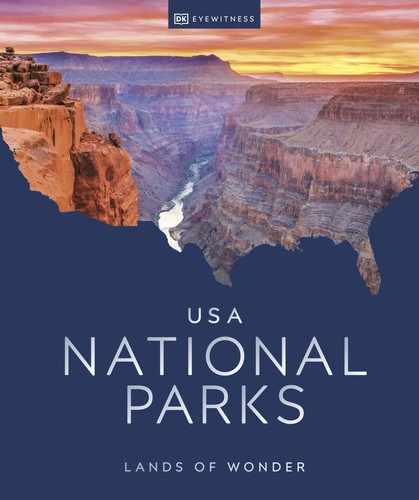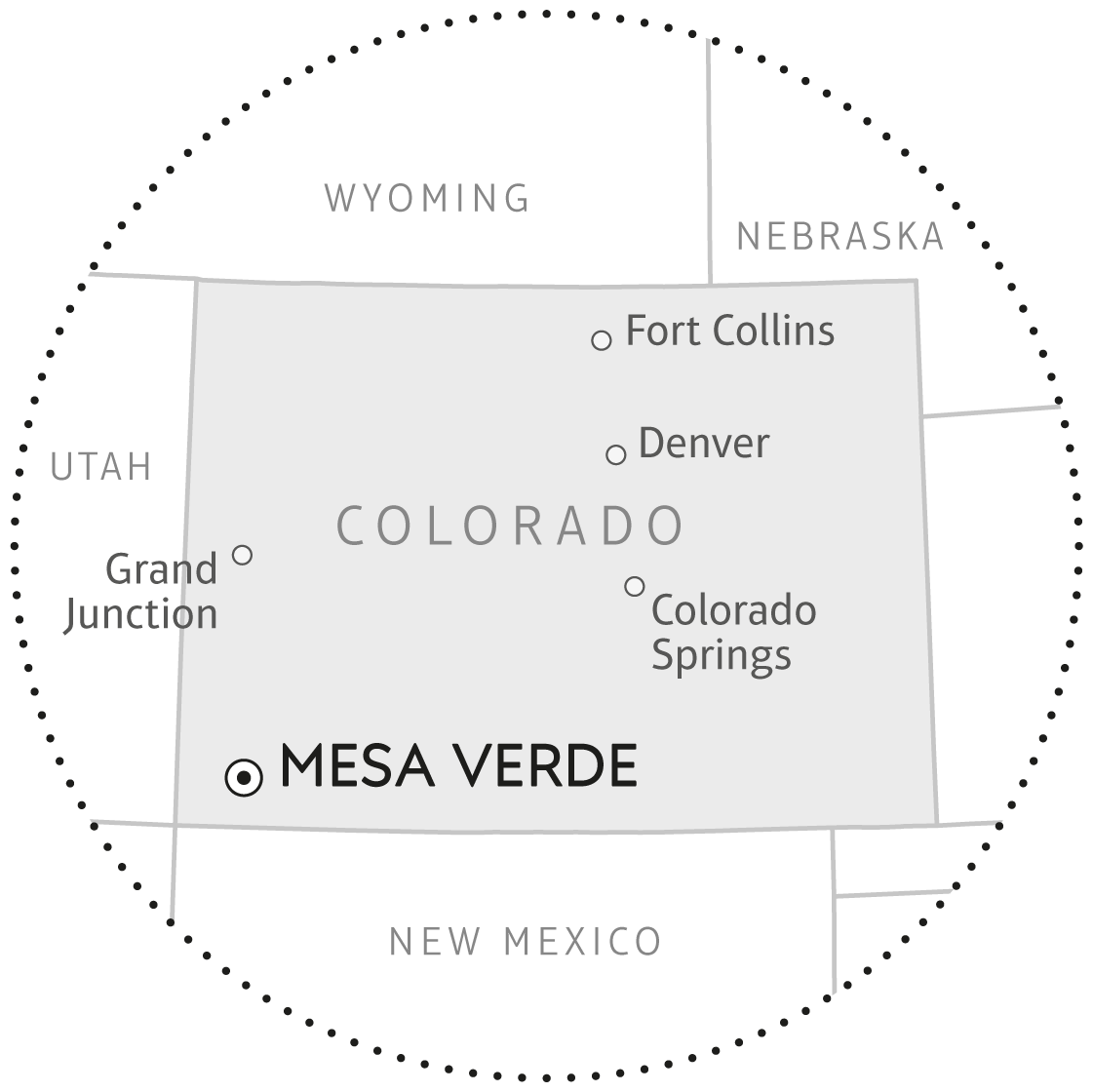
Colorado
MESA VERDE
ESTABLISHED 1906
Magnificent and mysterious, Mesa Verde is an archeological wonder where you can explore ancient Puebloan dwellings etched into the park’s looming cliffsides.
Step back into an ancient world in Mesa Verde. Centuries before European explorers reached this continent, the Ancestral Puebloans thrived among the steep cliffs and rocky mesa tops for 700 years. They built 600 remarkable cliff dwellings in the sandstone alcoves, hidden and protected by the overhanging bluffs, and dug round ceremonial centers, called kivas, deep into the rock. These are some of the best-preserved archeological sites anywhere, and as you walk among them, picturing the vibrant community that existed here, the ruins seem to spring to life once more.
Most impressive of all is the massive Cliff Palace, with more than 150 rooms. Stunning to look at, it’s even more exciting to climb wooden ladders like the ancestors did and explore its warren of tiny rooms on a ranger-guided tour. Take a tour, too, of Balcony House and Long House. Scenic roads and trails lead to other villages on the mesa—small sites that can be explored in an intimate setting. The Chapin Mesa Archeological Museum houses relics that illuminate this long-ago way of life. The building itself is something of an artifact—hewn from the same type of rock the Puebloans used to create their own homes.
![]()
Get a fabulous photo of the labyrinthine Spruce Tree House from overlooks near the Chapin Mesa Archeological Museum.
A story in artifacts
It was Spanish explorers who gave Mesa Verde its present-day name, which means “green table.” Centuries earlier, long before European explorers thought of the New World, early indigenous people settled these high, flat-topped cliffs.
Around AD 550, a group called the Basketmakers gave up nomadic life and built pithouses several feet below ground on the mesa top and in the recesses of the cliffs. Over the next two centuries, their villages flourished, as they learned to farm and make pottery. Their move from pithouse dwellings to multistoried stone houses marked the start of the Pueblo era. Although they left no written records, around three million objects—stone tools, weapons, pottery, and baskets—have been found at Mesa Verde. These artifacts give a fascinating glimpse into the lives of the Ancestral Puebloans.
Then, at the height of their prosperity the Puebloans began constructing the elaborate cliff dwellings you see today. In the 1200s, whether for defense, protection from the elements, or other reasons, they moved off the mesa top and into these hidden villages. The tall, straight walls, made of carefully fitted sandstone blocks, show their skill as master builders. The buildings range from small family units to complexes with mazes of chambers for living and storing food. Many rooms are plastered and painted with designs.
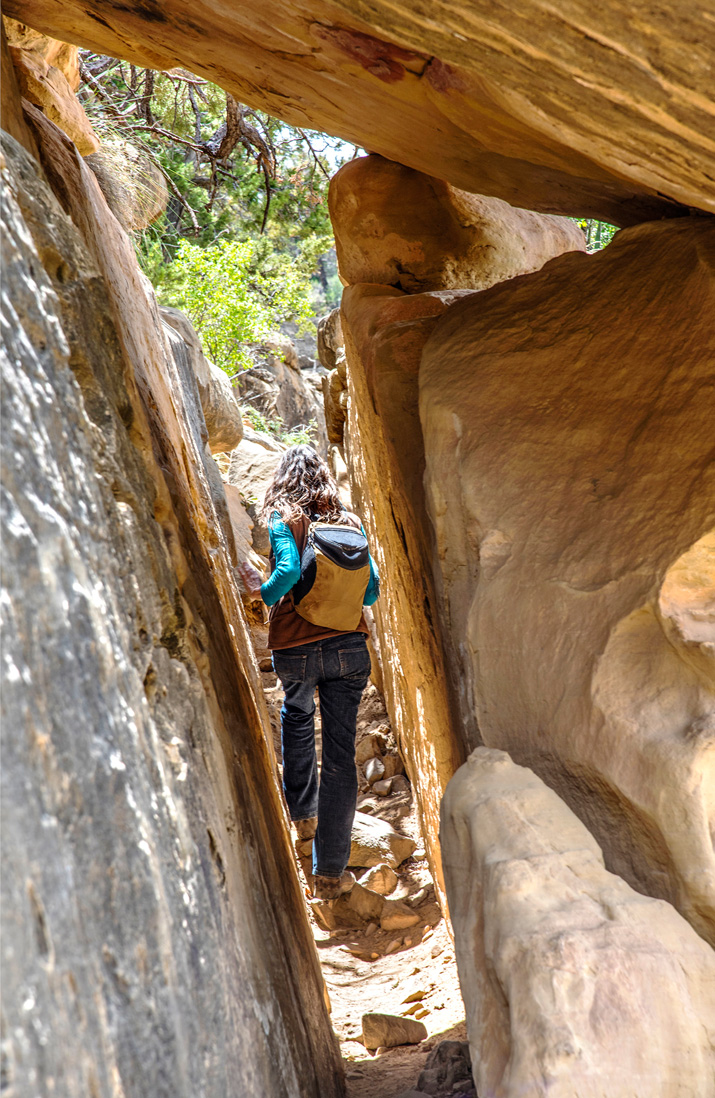
These narrow canyon-rock trails are early village sidewalks
Sophisticated infrastructure
When you stand amid these remarkable ruins, imagine daily life among the Ancestral Puebloans. They continued to grow corn, beans, and squash on the mesa top, climbing up to their fields using hand- and toeholds chiseled into the rock. Trails led down into the canyon for hunting game and drawing water. Open courtyards echoed with the sounds of domesticated dogs, turkeys, and village activities. The people sun-dried foods to last through the harsh winters and made beautiful pottery and crafts. Intriguing, too, are the kivas, where religious ceremonies, healing rites, and even weaving “bees” were held.
History Timeline |
|
|
Mesa Verde’s history stretches back to prehistoric times. Early inhabitants endured centuries of hardship to develop the skills needed to survive the rigors of life in this unforgiving climate. |
|
7500 BCMesa Verde is seasonally inhabited by Paleo-Indians, a nomadic people who moved throughout the Southwest and hunted game with spears. |

|
C. AD 550Basketmaker culture settles at Mesa Verde, so named because of the many baskets discovered at archeological sites from this era. Their rock art is found across the area. |
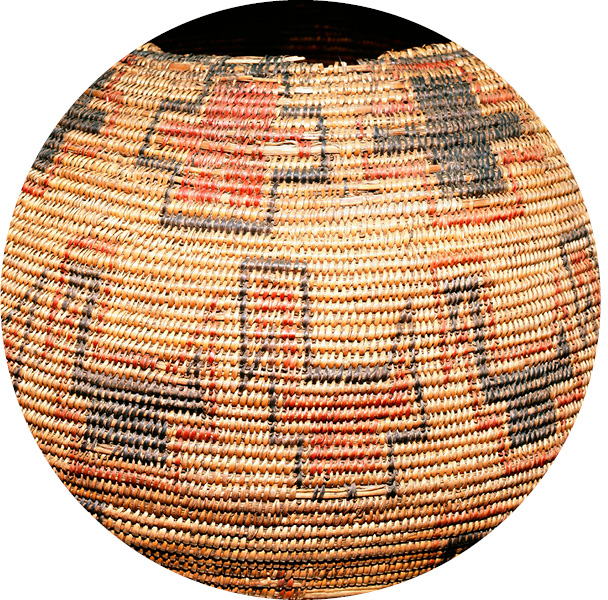
|
AD 750Ancestral Puebloans emerge from Basketmaker culture. They build the first dwellings above ground, and farming becomes their primary means of subsistence. |

|
1190s–1270sAs the population expands, extensive, interconnected pueblo complexes are built, including some 600 cliff dwellings. |
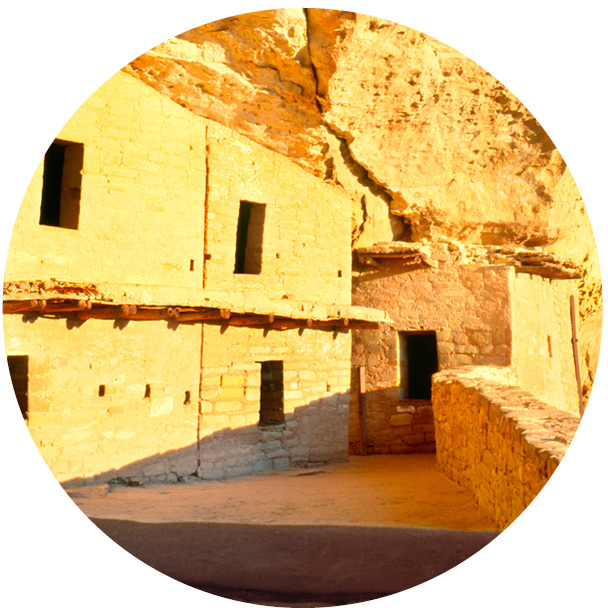
|
1285Mesa Verde is abandoned. Prolonged droughts likely made farming unviable, and the people moved to join relatives in other Pueblo communities in the region. |
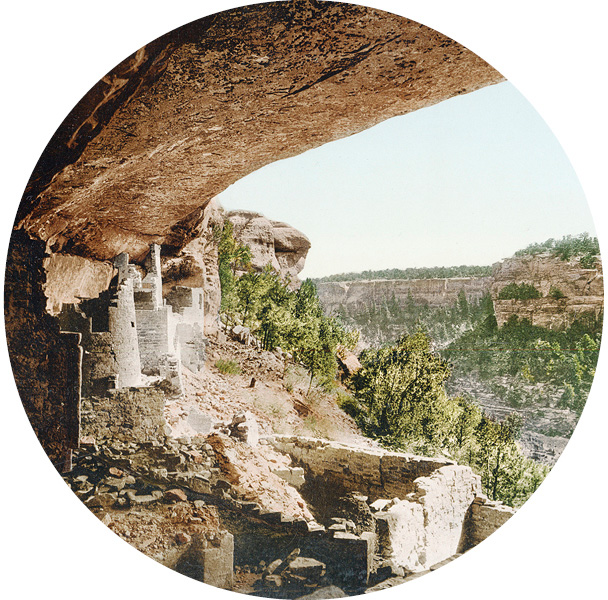
|
1906After intense lobbying by activists such as Lucy Peabody and Virginia McClurg, Mesa Verde is established as a national park by President Theodore Roosevelt. |
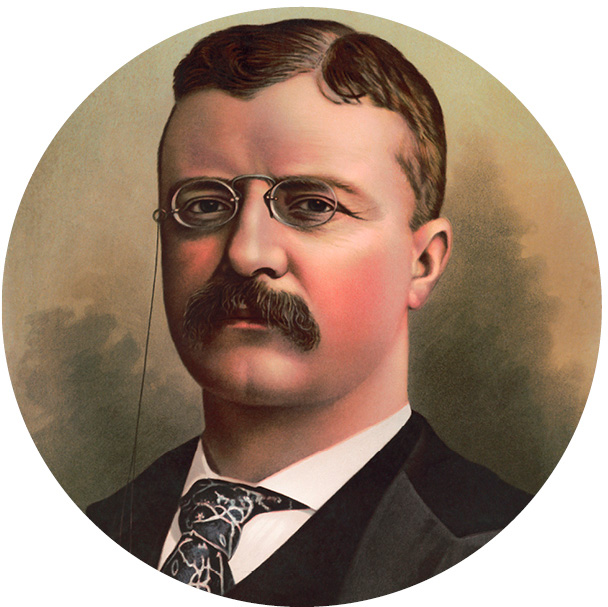
|
1978Mesa Verde becomes a designated UNESCO World Heritage Cultural Site, one of the first World Heritage sites in the United States. |
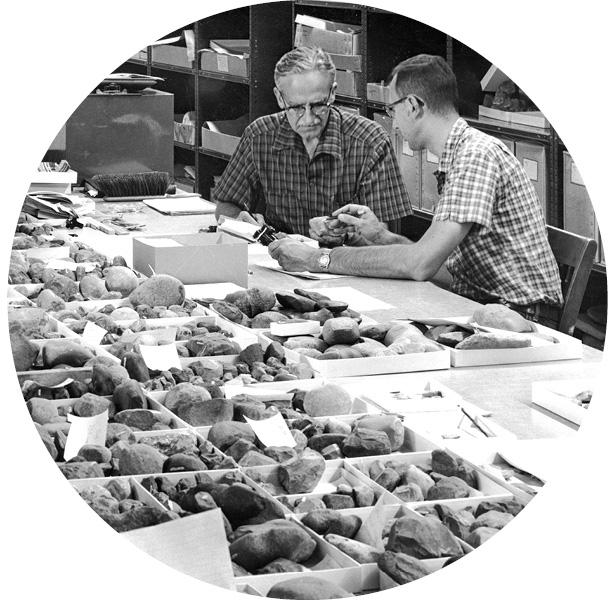
|
1996–2003Wildfires destroy forests and damage archeological sites, including rock artworks, but the clearing of dense undergrowth reveals many undiscovered sites in the park. |

|
2006Excavated American Indian remains and grave goods dug up during early archeological explorations are reburied in religious ceremonies held by related tribal elders. |

|
And then... gone
Yet, by 1285, the cliff dwellings were inexplicably abandoned. For a long time, it was believed that the Ancestral Puebloans simply vanished. Theories that they were wiped out by disease or warfare prevailed. It’s more likely that they were victims of early climate change. The 13th century brought regional drought and crop failure, and it’s now thought they migrated south to join Pueblo communities in New Mexico and Arizona, where their descendants live today. What they left behind helps us reconstruct the story of their lives.

The intricate compound of Cliff Palace is formed by linked-up living spaces
Did You Know?
Building cliff dwellings without ground-floor doors and windows provided protection against invaders.
Exploring the ruins
Mesa Verde encompasses two separate areas—Chapin Mesa and Wetherill Mesa—each with its special charms. Drive the winding, scenic roads from the park entrance to the end of Chapin Mesa, where you’ll find Cliff Palace, Balcony House, and Spruce Tree House. Along the way, stop at the overlooks and peer down into the canyons to get great views of the cliff dwellings, mesa-top villages, and surrounding landscape. The road traversing Wetherill Mesa has fabulous vistas of deep canyons and sandstone cliffs.
The best way to experience the cliff dwellings is to take a ranger-guided tour of Cliff Palace or Balcony House, or Long House on Wetherill Mesa. These take you right inside the great complexes, where you will climb up ladders, walk down stone steps, and even crawl through a tunnel, just as the Ancestral Puebloans once did. Even more special are the Cliff Palace twilight tours and the sunrise tours of Balcony House, when the soft light and contrasting shadows make the ruins most atmospheric.
Sign up for backcountry tours that will get you acquainted with Mug House, Oak Tree House, and other lesser-known sites. Rangers also give evening campfire talks on the natural and cultural history of Mesa Verde at the Morefield Campground.
Many sites can be visited on self-guided tours. Some, such as Square Tower House, are reached along short, paved trails off Mesa Top Loop Road. These include Kodak House on Wetherill Mesa, so named because a Swedish researcher left his camera here in 1891.
To really connect with the breathtaking landscape of Mesa Verde, follow hiking trails to Step House and Far View House, where you will discover pithouses, kivas, petroglyphs, farming terraces, and lookout towers. These sites are much less visited, and you’ll be able to linger and enjoy the peaceful surroundings.

Steps and terraces lead to the top of Step House on Wetherill Mesa
Paths to follow
The only national park created to protect cultural and historic sites, rather than natural features, Mesa Verde’s fragile archeological treasures are treated with care, and activities are structured accordingly. Still, outdoor adventures abound, and you can cycle on most roads, over steep hills and winding curves that may test your endurance, and there are lots of ranger-led bike and hike tours to join.
In winter, when the snow dusts the ridges above the cliff dwellings, Mesa Verde is magical. You can cross-country ski and snowshoe on groomed park trails, or simply walk through the frosty wonderland as the ancient cliff dwellers once did.
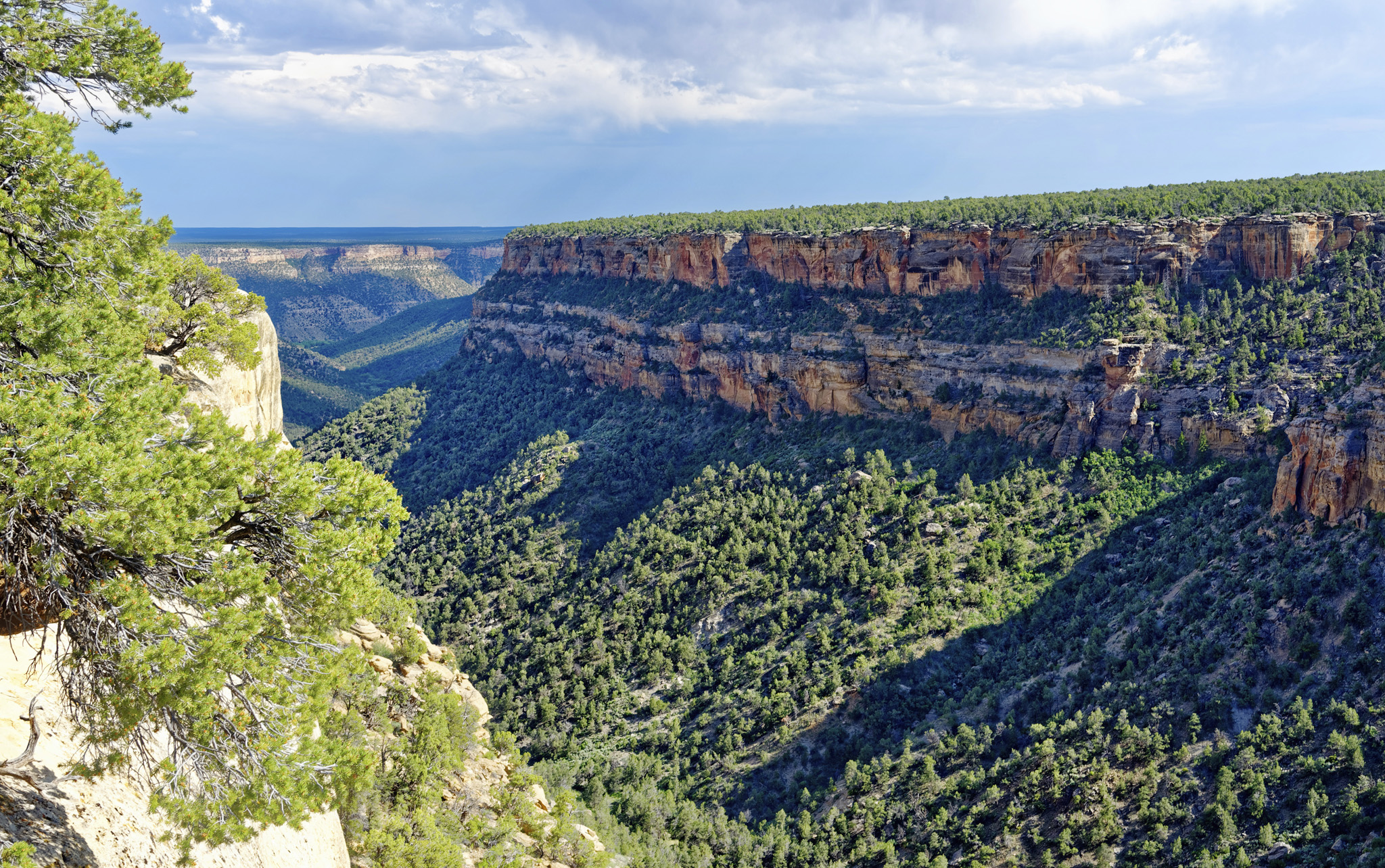
Views extend for miles and miles in every direction from the Soda Canyon overlook
Did You Know?
An estimated 20,000 people lived in the Mesa Verde region in the 13th century. A century later, it was all but deserted.
Best Hikes

Petroglyph Point Trail ▷ 2.4-mile (4-km) loop trail. Although it’s rugged and narrow and includes several steep drop-offs along the canyon wall, this hike is well worth the effort. The chance to see the rock art panel with handprints, spirals, hunting scenes, and other petroglyphs makes this scenic trail very popular.
Badger House Community Trail 2.3 miles (4.8 km) round trip. Beginning at the information kiosk on Wetherill Mesa, this moderately easy trail is both paved and gravel, and leads you through four sites on the mesa top that span 600 years of history.
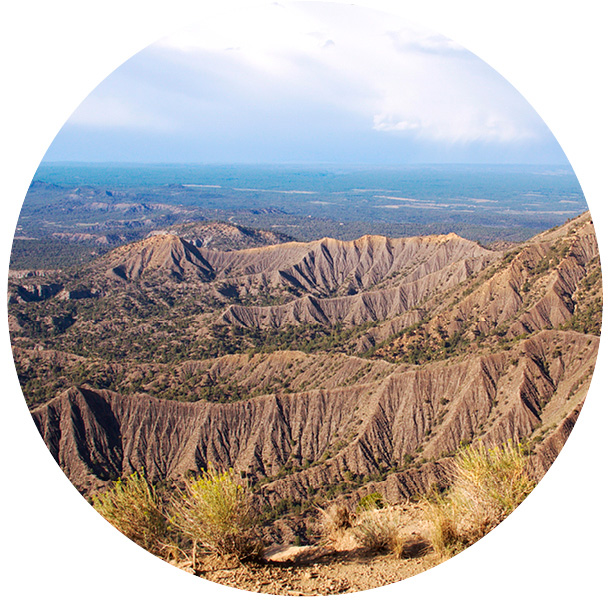
Point Lookout Trail ▷ 2.2 miles (3.5 km) round trip. For fabulous views of Montezuma and Mancos valleys and the surrounding countryside, hike the switchbacks up the back of Point Lookout and across the mesa top on this short but steep route.
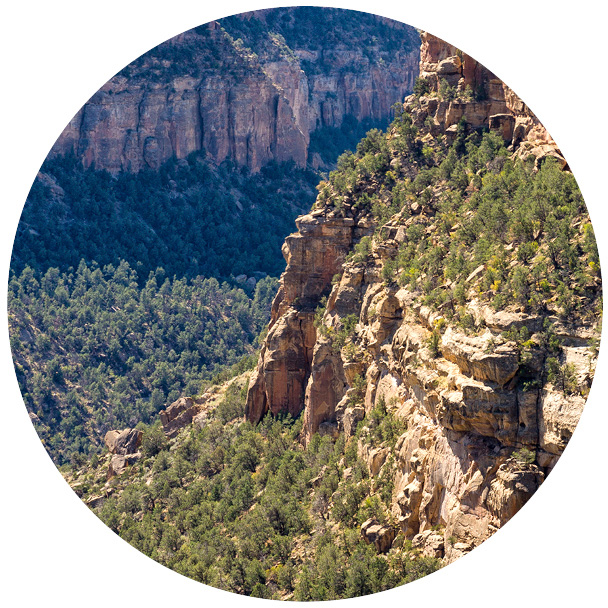
Soda Canyon Overlook ▷ 1.2 miles (2 km) round trip. This easy walk to the edge of the canyon through an open area gives you some fantastic views of the park. It offers a particularly splendid look at Balcony House and great views of other archeological sites. It’s a quick route and the trail is flanked by sage brush and other local flora.
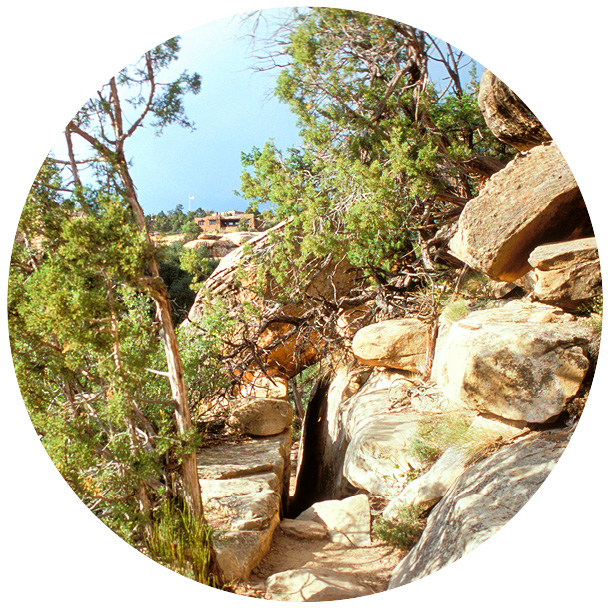
Spruce Canyon Trail ▷ 2.4 miles (4 km) round trip. Starting at the trailhead near the Chapin Mesa Archeological Museum, this moderately difficult hike takes you down to the bottom of the canyon and across a small stream in season.

PARK PIONEERS
Virginia Donaghe McClurg
In 1882, journalist Virginia Donaghe McClurg became one of the first white women to see the cliff dwellings at Mesa Verde. She founded the Colorado Cliff Dwellings Association and worked to protect these cultural treasures through her writing, lecturing, and fundraising. With activist Lucy Peabody, “the mother of Mesa Verde,” she rallied support through the Federation of Women’s Clubs and the press. Their work was vital in the creation of Mesa Verde National Park.
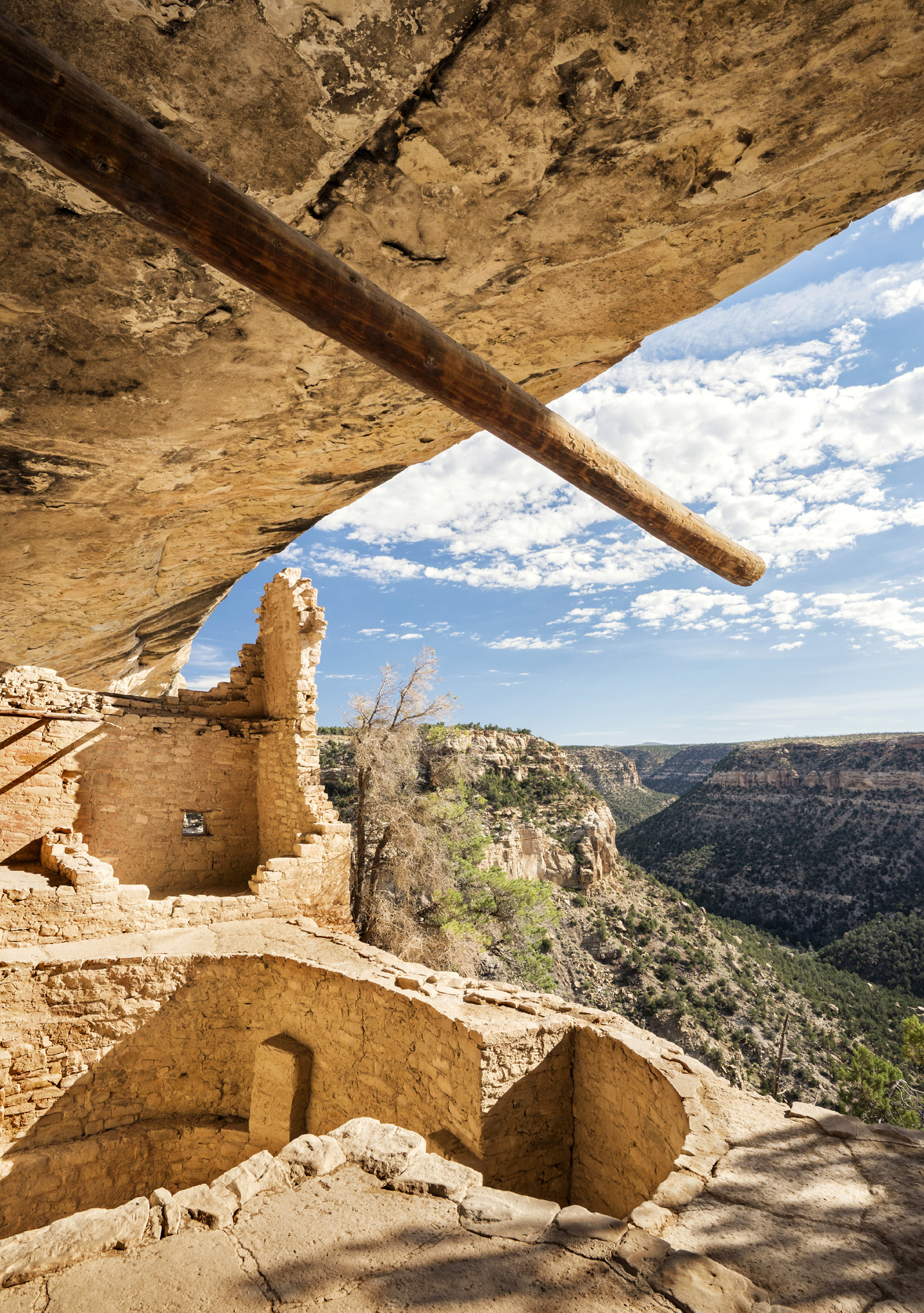
Balcony House, a largely intact Ancestral Puebloan dwelling, can be reached by ladder
